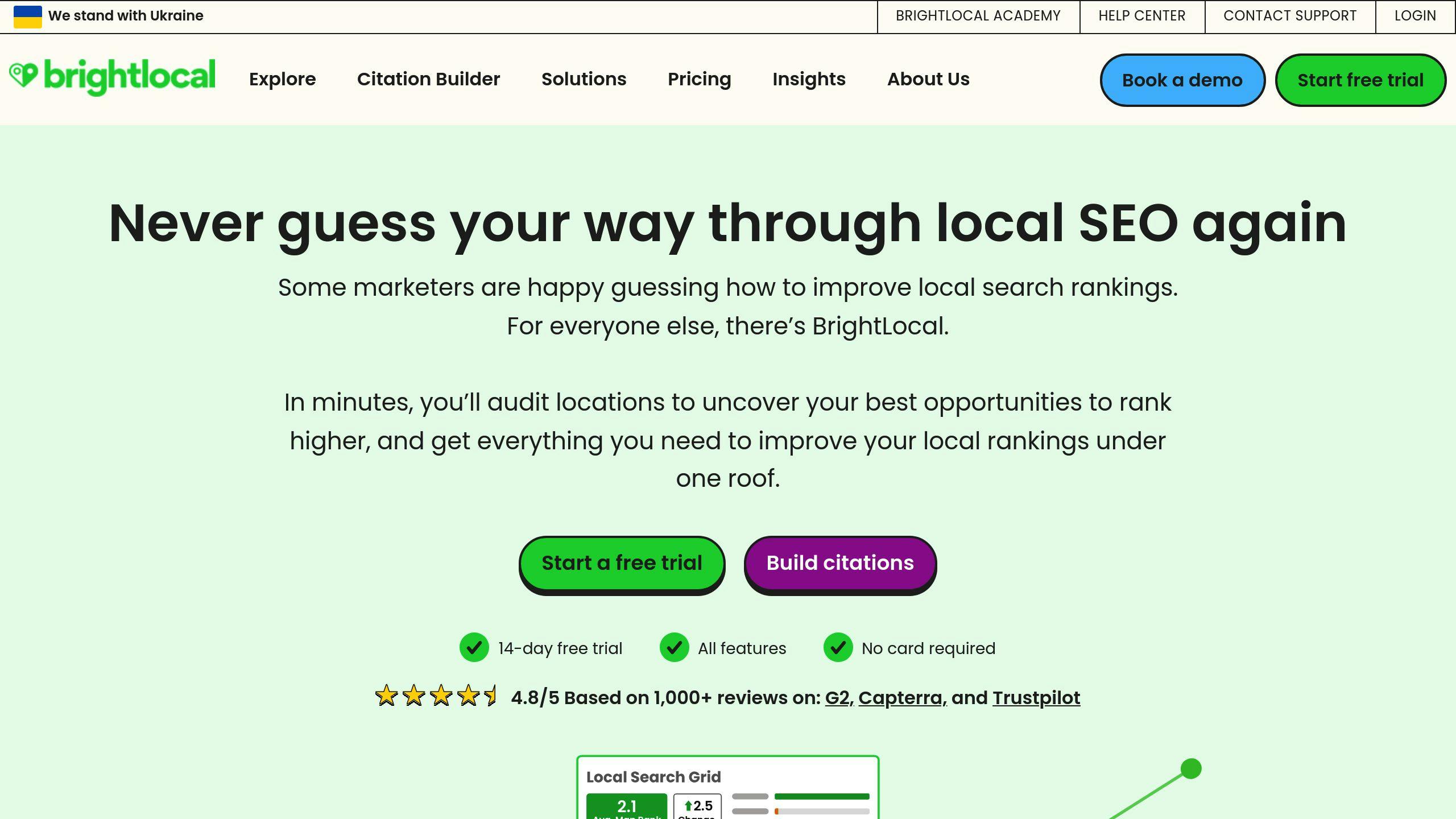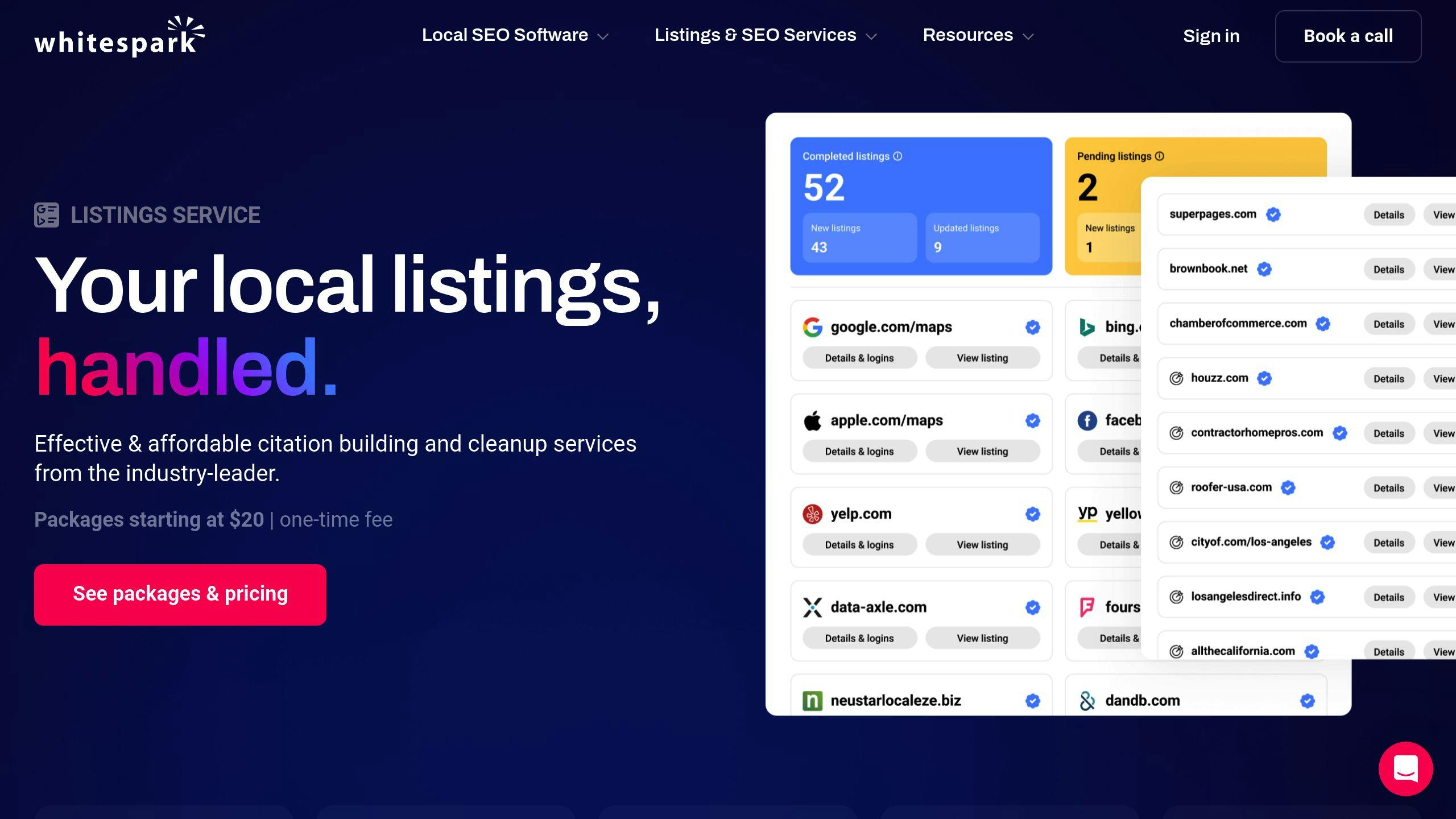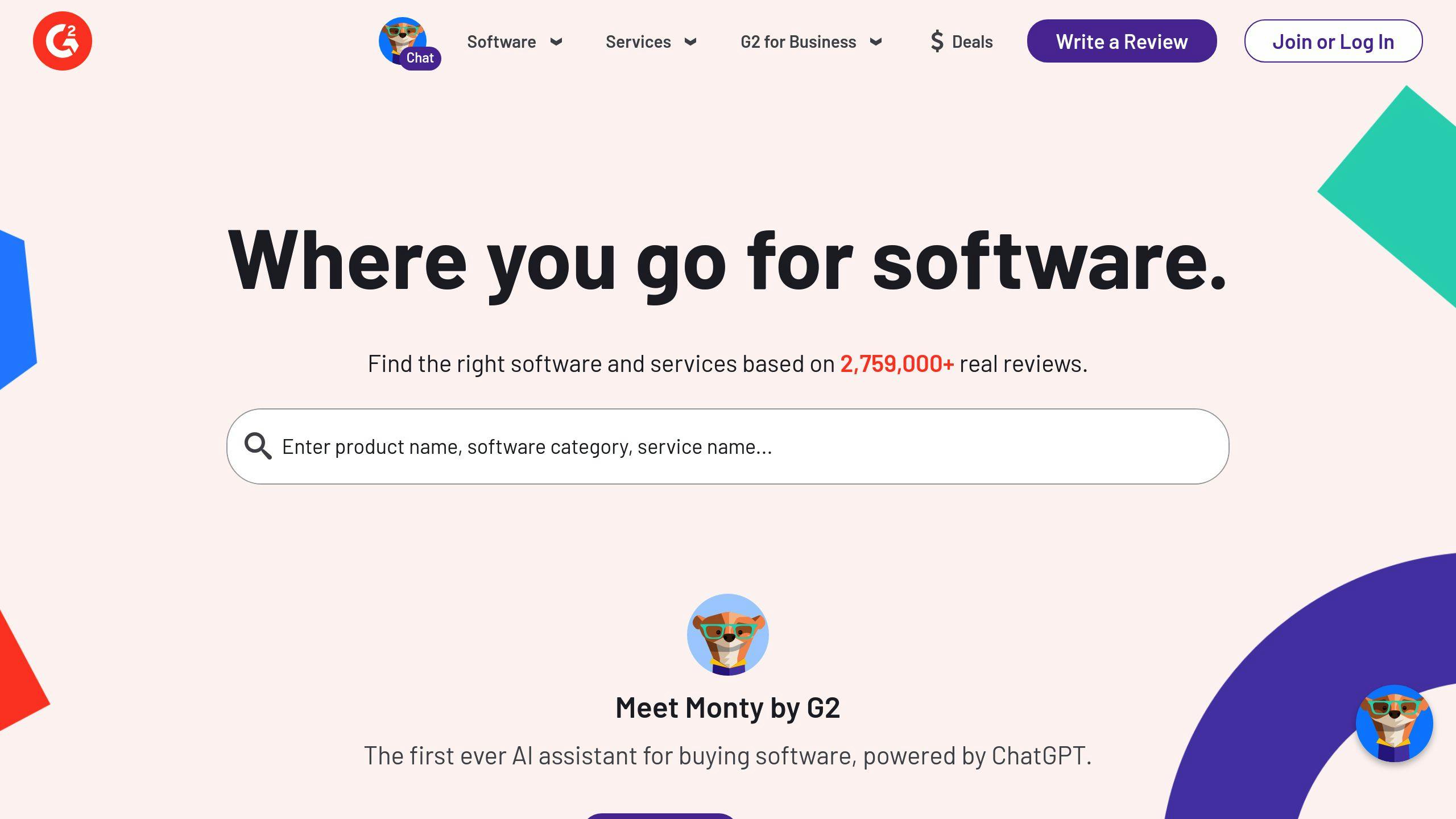Directory tools can supercharge your SaaS marketing efforts. Here's what you need to know:
- Save time by submitting to multiple directories at once
- Boost visibility and SEO rankings
- Bring in targeted traffic and build valuable backlinks
- Maintain brand consistency across platforms
Key benefits of using directory tools:
| Benefit | Impact |
|---|---|
| Speed | Submit to 300+ directories in days, not weeks |
| Accuracy | Consistent information across listings |
| Reach | Hit major players like G2 and Capterra |
| Analytics | Track submissions and measure success |
Top directory tools for SaaS:
- Listing Bot
- BrightLocal
- Whitespark
- G2
- Capterra
- GetApp
- Product Hunt
Remember: Focus on quality over quantity. Pick the right directories for your audience and keep your listings fresh and engaging.
Pro tip: Mix automation with a personal touch for best results.
Related video from YouTube
The Problem with Manual Directory Submissions
Manual directory submissions are a headache. They're slow, ineffective, and often a waste of time. Here's why:
- They're painfully slow: Filling out forms one by one? You might as well be filling a pool with a teaspoon.
- The success rate is awful: One marketer submitted to 1000 directories and only got 89 approvals. That's less than 9%!
- Mistakes happen: When you're submitting to hundreds of directories, it's easy to mess up. This can lead to inconsistent info across listings, which isn't great for SEO.
- Scaling is a nightmare: As your business grows, manual submissions become even harder to manage.
Here's a quick breakdown:
| Problem | Impact |
|---|---|
| Time sink | Less time for other marketing |
| Low success | Fewer backlinks |
| Inconsistent info | Potential SEO issues |
| Scaling problems | Limited growth |
| Human error | Inaccurate listings |
Manual submissions might have worked in the past, but in today's SaaS world? It's like bringing a knife to a gunfight.
So, what's the fix? Stick around. We're about to look at how directory tools can save your sanity and boost your marketing.
2. The Solution: Tools for Faster Directory Submissions
Manual directory submissions? They're a pain. But here's the good news: directory tools can cut your workload dramatically.
How Automation Saves Time
Directory tools automate submissions. You input your info once, and the tool does the rest. Here's what you get:
- Speed: Weeks become days. The SaaS Submission Service can hit 300+ directories in one go.
- Accuracy: Say goodbye to typos. Your info stays consistent across listings.
- Scale: Reach more directories without extra work.
- Focus: Build your product, not your listings.
Let's compare:
| Manual Submissions | Automated Submissions |
|---|---|
| Weeks to complete | Days to complete |
| High error rate | Consistent information |
| Limited reach | 300+ directories |
| Time-consuming | Set it and forget it |
It's not just about speed. These tools can boost your visibility too. Dubverse AI used an automated service and saw:
- 3.6k+ backlinks
- 405+ referring domains
- 6.3k+ keywords
- 19.5k+/mo traffic growth in 6 months
That's serious growth from one tool.
"Calendly is a godsend. Send the person your Calendly link, they find a good day/time and done. No back and forth, it's great!" - John Indiveri, Talent Acquisition Manager
This quote's about scheduling, but it shows how the right tool can make a big difference. The same goes for directory submissions.
Not all directories are equal. The top 20% drive 80% of the traffic and leads. Good directory tools focus on these high-impact sites.
Next, we'll look at what features to seek in these tools. For now, remember: if manual submissions are wearing you down, automation's got your back.
3. What to Look for in Directory Tools
Choosing the right directory tool for your SaaS marketing? Here's what matters:
Easy-to-Use Design
You want a tool that doesn't make you pull your hair out. Look for:
- Clear navigation
- Simple submission forms
- A dashboard you can actually understand
Bulk Submissions
Why? Because it's a game-changer. You can:
- Hit tons of directories fast
- Keep your info consistent
- Scale up without breaking a sweat
For instance, SaaS Submission Service can blast your info to over 300 directories in one go. That's efficiency.
Customization Options
Not all directories play by the same rules. Good tools let you:
- Tweak descriptions for each site
- Add or drop details as needed
- Target specific audiences
Results Tracking
Because guessing is for amateurs. Look for:
- Submission status updates
- Traffic and lead stats
- Backlink monitoring
Here's the real deal - manual vs. tool-based submissions:
| Feature | Manual | Tool-Based |
|---|---|---|
| Speed | Weeks | Days |
| Accuracy | Error-prone | Consistent |
| Reach | Limited | 300+ directories |
| Customization | Slow | Quick |
| Tracking | Manual | Built-in analytics |
Pro tip: The top 20% of directories drive 80% of your results. Focus on the big players like G2 and Capterra.
When you're using these tools:
- Fill out EVERYTHING
- Use keywords that matter
- Keep your info fresh
4. How Directory Tools Help SaaS Marketing
Directory tools can supercharge your SaaS marketing. Here's the scoop:
Time Saver
Forget manual submissions. Directory tools let you blast your info to tons of directories in one go. More time for the important stuff.
Visibility Boost
More listings = more eyeballs on your product. Simple math.
| Manual Submissions | With Directory Tools |
|---|---|
| Days or weeks | Hours |
| Limited listings | 300+ directories |
| Narrow reach | Wide reach |
Brand Consistency
Keep your brand looking sharp across the board. Builds trust, no sweat.
SEO Juice
Quality directory links can pump up your search rankings. Hello, organic traffic!
Industry insiders say: "The top 20% of directory and review sites drive 80% of the traffic and leads." That's why you can't ignore big players like G2 and Capterra.
Pro tips:
- Go for tools that hit multiple directories at once
- Zero in on the top dogs in your niche
- Keep those listings fresh and top-notch
sbb-itb-8e44301
5. Popular Directory Tools for SaaS Marketing
Let's look at some top directory tools for SaaS marketing:
Listing Bot

This AI tool is a SaaS marketer's dream:
- Submits to 100+ directories at once
- One-click process
- Aims to boost domain ratings
BrightLocal

BrightLocal is a local SEO and directory submission powerhouse:
| Feature | Benefit |
|---|---|
| Citation Builder | Lists on major and niche directories |
| Customizable listings | Tailor info per directory |
| Manual submissions | High-quality, accurate listings |
| Full ownership | Get login details for each listing |
It lets you create 100,000+ monthly listings at $2 per site. That's value.
Whitespark

Whitespark takes a different route:
- Manual listing services
- Citation cleanup for moved or renamed businesses
- Ensures listing accuracy
G2

G2 is more than a directory - it's a community:
- 5.5 million+ buyers
- Marketing tools for audience targeting
- Free vendor responses to reviews
- Ahrefs Domain Rating: 90
- 3.5 million monthly visitors
Capterra
Capterra is a SaaS directory giant:
- 1.5 million+ verified reviews
- 50,000+ products
- Free and pay-per-click plans
- 1 million+ monthly visitors
- Ahrefs Domain Rating: 90
GetApp
GetApp shines in Google searches:
- Interactive SaaS comparison tools
- Detailed product data
- Ahrefs Domain Rating: 82
- 886,000 estimated monthly visitors
Product Hunt

Product Hunt is perfect for making waves:
- Community-driven platform
- Helps products gain traction
- Great for launches and updates
6. Tips for Using Directory Tools Well
Want to make the most of directory tools for your SaaS marketing? Here's how:
Choose the Right Directories
Not all directories are worth your time. Focus on:
- High PageRank directories
- Directories that fit your SaaS niche
- Regularly updated directories
Steer clear of directories with these red flags:
- Names containing "Free", "PR", "link", "URL", "Dofollow", "Rank", or "Instant Approval"
- Automatic submissions
- User-selected anchor text
To find niche directories, try these Google search queries:
- "Your SaaS niche" intitle:"directory"
- "Your SaaS niche" inurl:"directory" "submit"
Write Good Listings
| Do | Don't |
|---|---|
| Use natural language | Stuff keywords |
| Include primary keywords | Use promotional language |
| Stick to factual descriptions | Sell in listings |
| Choose the right category | Submit to multiple categories |
Mix Automation with Personal Touch
Directory tools save time, but don't rely on them 100%:
1. Use tools for bulk submissions to major directories
2. Manually submit to high-value, niche directories
3. Regularly check and update your listings
Here's the deal: Directory submissions should be just ONE part of your SEO strategy. Use them smart to boost your SaaS marketing without getting on search engines' bad side.
7. Common Problems and Solutions
Using directory tools for SaaS marketing can be tricky. Here are the main issues and how to fix them:
Avoid Looking Like Spam
Automated submissions can trigger spam filters. Here's how to stay safe:
- Submit to directories over time, not all at once
- Use different descriptions for each listing
- Pick quality directories that fit your SaaS niche
Keep Listings High-Quality
Good listings help you stand out. Here's what to do:
| Do | Don't |
|---|---|
| Write unique, engaging descriptions | Use the same content everywhere |
| Complete all fields | Skip important info |
| Pick the best category | Submit to many categories |
| Use keywords naturally | Overuse keywords |
Keep Information Current
Old info hurts your credibility and SEO. Stay updated by:
1. Making a list of all your directory listings
2. Setting reminders to check and update listings regularly
3. Using tools to manage multiple listings at once
4. Checking how your business appears in search results
"Up-to-date listings build trust with customers and search engines", says Sarah Johnson, SEO Manager at SaaSify.
8. Measuring Your Success
Want to know if your directory tools are working? Let's look at three key areas:
More Website Visitors
Use Google Analytics to track traffic from directory listings:
- Set up tracking for each directory
- Check the "Referral Traffic" report
- Look for traffic increases from directory sites
SaaSify saw a 35% traffic jump after using ListingBot for 50 directories over 3 months. Not bad!
Better Domain Rating
Domain Rating (DR) shows your site's backlink strength. Here's how to check:
- Use Ahrefs or Moz
- Note your DR before starting
- Check again after 3-6 months
| Time | Domain Rating | Change |
|---|---|---|
| Start | 30 | - |
| 3 Months | 35 | +5 |
| 6 Months | 40 | +10 |
Higher Conversion Rates
Track how many directory visitors become customers:
- Set up goal tracking in Google Analytics
- Create a segment for directory traffic
- Compare conversion rates to other sources
"Our conversion rate from directory traffic jumped from 2% to 3.5% in just two months", says Tom Chen, CMO at CloudStack.
Look at all these metrics together. Seeing more visitors, a higher DR, and better conversion rates? Your directory strategy is likely working.
9. Wrap-Up
Directory tools can supercharge your SaaS marketing. Here's the lowdown:
- They're time-savers. Submit to multiple directories in one go.
- They keep your brand message consistent across platforms.
- More listings = more backlinks. Hello, better search rankings!
- They bring in targeted traffic. Directory users are often ready to buy.
- You can track your success with built-in analytics.
But here's the kicker: it's not about quantity. It's about picking the RIGHT directories for YOUR audience.
"Our directory traffic conversion rate shot up from 2% to 3.5% in just two months", says Tom Chen, CMO at CloudStack.
Want to squeeze the most out of these tools? Here's how:
- Craft clear, punchy listings
- Keep your info fresh
- Mix automation with a personal touch
- Track and tweak based on results
Remember: directories are tools, not magic wands. Use them wisely, and they'll work wonders for your SaaS marketing.
